- Clone
- WM59 (See other available formats)
- Regulatory Status
- RUO
- Workshop
- V P025
- Other Names
- PECAM-1, EndoCAM
- Isotype
- Mouse IgG1, κ
- Ave. Rating
- Submit a Review
- Product Citations
- publications
CD31 is a 130-140 kD type I transmembrane glycoprotein also known as platelet endothelial cell adhesion molecule-1 (PECAM-1) or Endocam. It is expressed on monocytes, platelets, granulocytes, endothelial cells and lymphocyte subsets. CD31 has been reported to bind CD38 and be involved in wound healing, angiogenesis, and cellular migration in an inflammatory situation.
Product DetailsProduct Details
- Verified Reactivity
- Human, Cynomolgus, Rhesus
- Reported Reactivity
- African Green, Baboon
- Antibody Type
- Monoclonal
- Host Species
- Mouse
- Formulation
- Phosphate-buffered solution, pH 7.2, containing 0.09% sodium azide
- Preparation
- The antibody was purified by affinity chromatography and conjugated with Spark Red™ 718 under optimal conditions.
- Concentration
- 0.2 mg/mL
- Storage & Handling
- The antibody solution should be stored undiluted between 2°C and 8°C, and protected from prolonged exposure to light. Do not freeze.
- Application
-
FC
- Recommended Usage
-
Flexi-Fluors™ are provided at a standard 0.2 mg/mL concentration. We recommend titrating this reagent to determine the optimal concentration for each application. For many flow cytometry applications, conjugated antibodies perform well at concentrations ranging from 0.03 to 1.0 µg per million cells in 100 µL. We recommend testing a range of concentrations starting from 10 µg/mL.
For example, make five 1:1 serial dilutions of the 0.2 mg/mL antibody. Add 5 µL of each dilution (including the undiluted antibody) to 100 µL of cells (at 107 cells/mL) to test six concentrations -- 1.0, 0.5, 0.25, 0.125, 0.06, and 0.03 µg per million cells in 100 µL volume. Compare staining patterns or create a titration curve using the MFI or staining index to determine the optimal concentration.
* Spark Red™ 718 has a maximum excitation of 697 nm and a maximum emission of 711 nm. - Excitation Laser
-
Red Laser (633 nm)
- Application Notes
-
Clone WM59 has been reported to recognize the D2 extracellular portion of CD31.
Additional reported applications (for the relevant formats) include: immunofluorescence microscopy2, immunohistochemical staining of acetone-fixed frozen tissue sections8, blocking of platelet aggregation3, and spatial biology (IBEX)11,12. Clone WM59 is not recommended for immunohistochemical staining of formalin-fixed paraffin-embedded sections. The Ultra-LEAF™ purified antibody (Endotoxin < 0.01 EU/µg, Azide-Free, 0.2 µm filtered) is recommended for functional assays (Cat. No. 303143 & 303144).
The purified WM59 antibody is useful as a capture antibody for a sandwich ELISA assay, when used in conjunction with biotin anti-human CD31 antibody (Cat. No. 536604) antibody as the detection antibody. - Additional Product Notes
-
For more information about Flexi-Fluors™, visit our Flexi-Fluor™ page and review FAQs associated with this product line.
-
Application References
(PubMed link indicates BioLegend citation) -
- Schlossman S, et al. Eds. 1995. Leucocyte Typing V Oxford University Press. New York.
- Muczynski KA, et al. 2003. J. Am. Soc. Nephrol. 14:1336. (IF)
- Wu XW, et al. 1997. Arterioscl. Throm. Vas. 17:3154. (Block)
- Nagano M, et al. 2007. Blood 110:151. (FC) PubMed
- MacFadyen JR, et al. 2005. FEBS Lett. 579:2569. PubMed
- Yoshino N, et al. 2000. Exp. Anim. (Tokyo) 49:97. (FC)
- Sestak K, et al. 2007. Vet. Immunol. Immunopathol. 119:21.
- Wicki A, et al. 2012. Clin. Cancer Res. 18:454. (FC, IHC) PubMed
- Oeztuerk-Winder F, et al. 2012. EMBO J. 31:3431. (FC) PubMed
- Bushway ME, et al. 2014. Biol Reprod. 90(5): 110 (IF) PubMed
- Radtke AJ, et al. 2020. Proc Natl Acad Sci USA. 117:33455-33465. (SB) PubMed
- Radtke AJ, et al. 2022. Nat Protoc. 17:378-401. (SB) PubMed
- RRID
-
AB_3106367 (BioLegend Cat. No. 285119)
Antigen Details
- Structure
- Ig superfamily, type I transmembrane glycoprotein, 130-140 kD
- Distribution
-
Monocytes, platelets, granulocytes, endothelial cells, lymphocyte subset
- Function
- Cell adhesion, signal transduction
- Ligand/Receptor
- CD38
- Cell Type
- Endothelial cells, Granulocytes, Lymphocytes, Monocytes, Neutrophils, Platelets
- Biology Area
- Angiogenesis, Cell Adhesion, Cell Biology, Immunology, Neuroinflammation, Neuroscience
- Molecular Family
- Adhesion Molecules, CD Molecules
- Antigen References
-
- DeLisser H, et al. 1994. Immunol. Today 15:490.
- Newman P, 1997. J. Clin. Invest. 99:3.
- Fawcett J, et al. 1995. J. Cell Biol. 128:1229.
- Gene ID
- 5175 View all products for this Gene ID
- UniProt
- View information about CD31 on UniProt.org
Related FAQs
- What are Flexi-Fluors?
-
Flexi-Fluors are rapidly made-to-order conjugated antibodies. The technology, manufacturing processes, and specifications used to create Flexi-Fluors are the same as our regular catalog products. However, the optimal concentration and performance of each Flexi-Fluor must be determined by the customer.
- How quickly will I receive my order?
-
We aim to ship Flexi-Fluors within 2-3 weeks of receipt of your order. However, depending on your location, shipping times may vary.
- How are Flexi-Fluors different from regular catalog products?
-
Flexi-Fluors are made on demand, specifically for you. Flexi-Fluors are manufactured using the same high-quality standards, and specifications as other catalog products. For faster delivery, Flexi-Fluors are not tested by flow cytometry to determine optimal concentrations or evaluate performance. This testing needs to be performed by the customer.
- How do I determine the optimal concentration for using my Flexi-Fluor? How should I titrate my antibody?
-
Flexi-Fluors are provided at a standard 0.2 mg/mL concentration. We recommend that you titrate your antibody to determine the optimal concentration to use for your application. For many flow cytometry applications, conjugated antibodies perform well at concentrations ranging from 0.03 to 1.0 µg per million cells in 100 µL volume. We recommend that you test a range of concentrations starting from 10 µg/mL.
For example, make five 1:1 serial dilutions of your 0.2 mg/mL antibody. Add 5 µL of each dilution (including the undiluted antibody) to 100 µL of cells (at 107 cells/ml) to test six concentrations - 1.0, 0.5, 0.25, 0.125, 0.06, and 0.03 µg per million cells in 100 µL volume. Compare staining patterns or create a titration curve using the MFI or staining index to determine the optimal concentration.
- I can’t find the antibody-dye combination that I need. When will it be available?
-
We continuously update our catalog, introducing scores of new products every month. Please get in touch with our Technical Service team for an update on new products or recommendations for suitable alternatives to complete your panel. Or contact Custom Solutions to inquire about our affordable custom conjugation services.
- I need help to validate the performance of my Flexi-Fluor. Who should I contact?
-
Please get in touch with Technical Service for assistance.
- Can I order more than 50 μg of a Flexi-Fluor?
-
Yes, you can order multiple vials of the same Flexi-Fluor products. We cannot guarantee, however, that these vials will be bottled from the same lot. For bulk single-lot orders, contact our Custom Solutions team.
- What is the expiration date of my Flexi-Fluor?
-
Expiration dates can be found on the vial label or by using our CoA lookup tool.
Other Formats
View All CD31 Reagents Request Custom ConjugationCompare Data Across All Formats
This data display is provided for general comparisons between formats.
Your actual data may vary due to variations in samples, target cells, instruments and their settings, staining conditions, and other factors.
If you need assistance with selecting the best format contact our expert technical support team.
-
FITC anti-human CD31
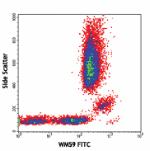
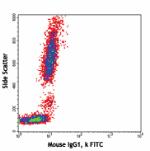
Human peripheral blood lymphocytes, monocytes and granulocyt... -
PE anti-human CD31
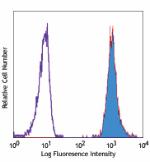
Human peripheral granulocytes were stained with CD31 (clone ... 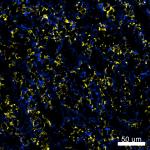
Confocal image of human spleen sample acquired using the IBE... 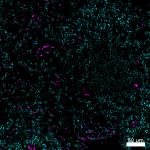
Confocal image of human lymph node sample acquired using the... 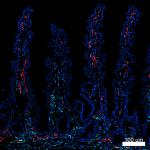
Confocal image of human jejunum sample acquired using the IB... -
Purified anti-human CD31
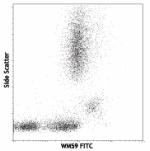
Human peripheral blood lymphocytes, monocytes and granulocyt... 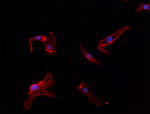
HUVEC cells were fixed with 1% paraformaldehyde (PFA) and bl... 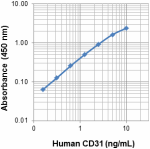
-
Alexa Fluor® 488 anti-human CD31
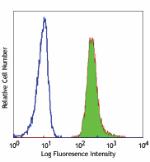
Human peripheral blood granulocytes were stained with CD31 (... -
Alexa Fluor® 647 anti-human CD31
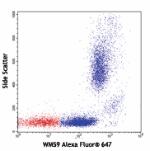
Human peripheral blood lymphocytes, monocytes and granulocyt... -
Pacific Blue™ anti-human CD31
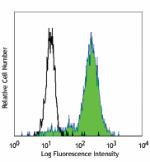
Human peripheral blood monocytes were stained with CD31 (clo... -
APC anti-human CD31

Human peripheral blood lymphocytes, monocytes and granulocyt... -
PE/Cyanine7 anti-human CD31

Human peripheral blood lymphocytes, monocytes and granulocyt... -
APC/Cyanine7 anti-human CD31
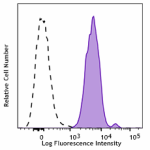
Human peripheral blood granulocytes were stained with CD31 (... -
Brilliant Violet 605™ anti-human CD31
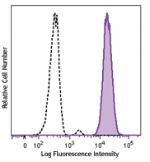
Human peripheral blood granulocytes were stained with anti-h... -
Brilliant Violet 421™ anti-human CD31
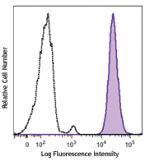
Human peripheral blood granulocytes were stained with CD31 (... -
Purified anti-human CD31 (Maxpar® Ready)
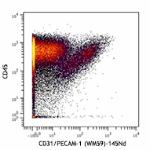
Human PBMCs stained with 154Sm-anti-CD45 (HI30) and 145Nd-an... -
Alexa Fluor® 594 anti-human CD31
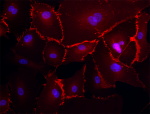
HUVEC human endothelial cells were fixed with 1% paraformald... -
PE/Dazzle™ 594 anti-human CD31
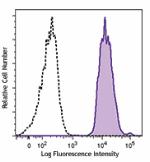
Human peripheral blood granulocytes were stained with CD31 (... -
PerCP/Cyanine5.5 anti-human CD31
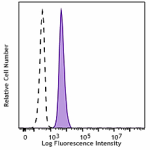
Human peripheral blood granulocytes were stained with CD31 (... -
Alexa Fluor® 700 anti-human CD31
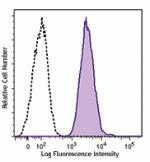
Human peripheral blood granulocytes were stained with CD31 (... 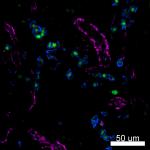
Confocal image of human lymph node sample acquired using the... -
Brilliant Violet 711™ anti-human CD31
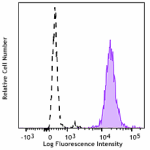
Human peripheral blood granulocytes were stained with CD31 (... -
TotalSeq™-A0124 anti-human CD31
-
TotalSeq™-C0124 anti-human CD31
-
APC/Fire™ 750 anti-human CD31
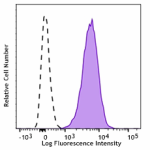
Human peripheral blood granulocytes were stained with CD31 (... -
Ultra-LEAF™ Purified anti-human CD31

Human peripheral blood lymphocytes, monocytes and granulocyt... -
TotalSeq™-B0124 anti-human CD31
-
Brilliant Violet 785™ anti-human CD31
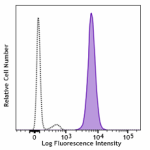
Human peripheral blood granulocytes were stained with anti-h... -
PE/Cyanine5 anti-human CD31
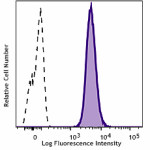
Human peripheral blood granulocytes were stained with PE/Cya... -
TotalSeq™-D0124 anti-human CD31
-
PE/Fire™ 700 anti-human CD31
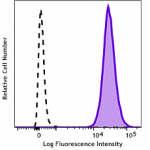
Human peripheral blood granulocytes were stained with anti-h... -
Spark YG™ 581 anti-human CD31

Human peripheral blood lymphocytes were stained with anti-hu... -
Brilliant Violet 510™ anti-human CD31

Human peripheral blood lymphocytes were surface stained with... -
Spark Red™ 718 anti-human CD31 (Flexi-Fluor™)
-
FITC anti-human CD31

Typical results from human peripheral granulocytes stained e... -
Spark Blue™ 550 anti-human CD31 (Flexi-Fluor™)

 Login / Register
Login / Register 













Follow Us